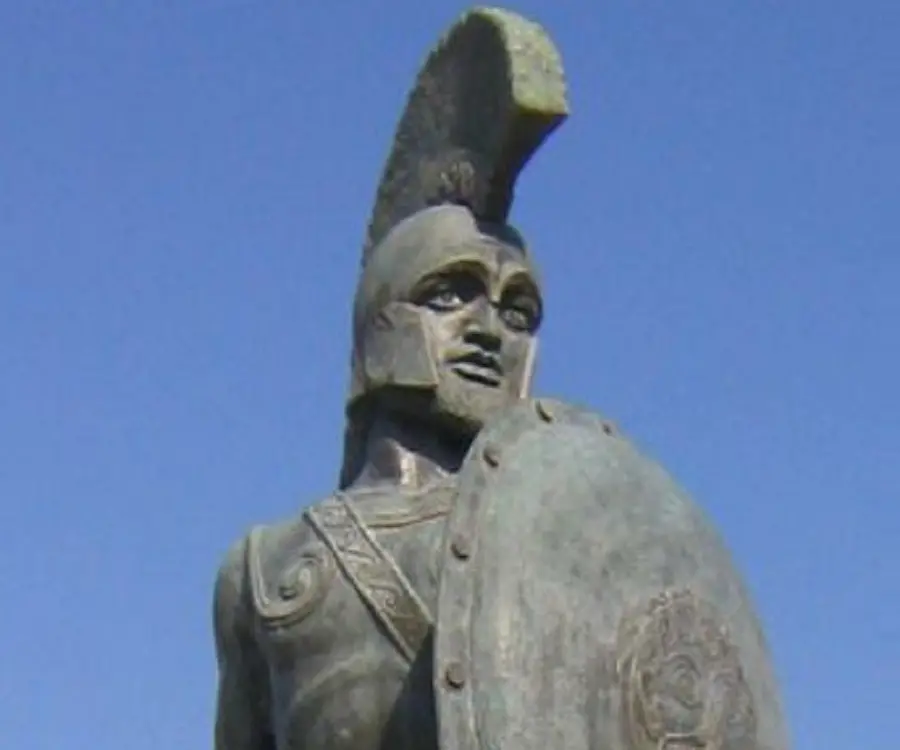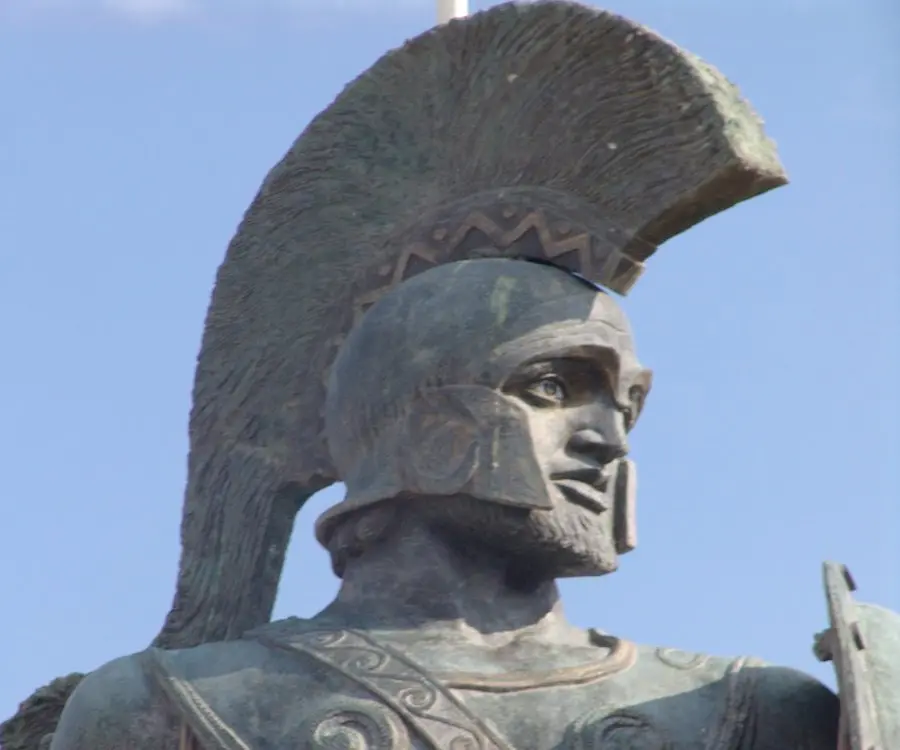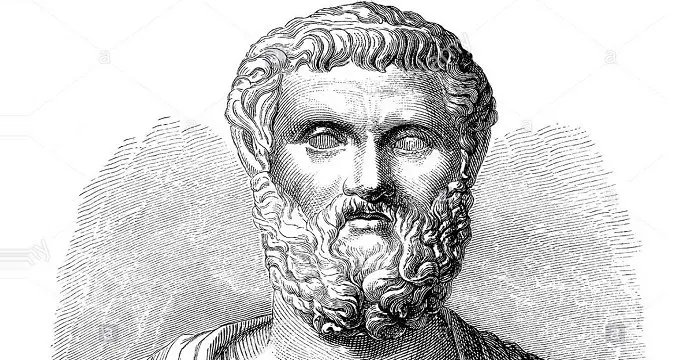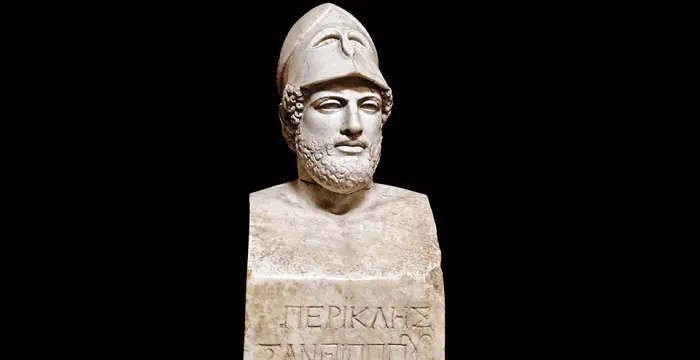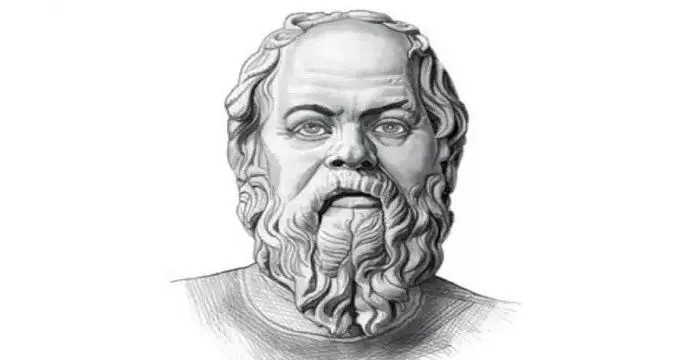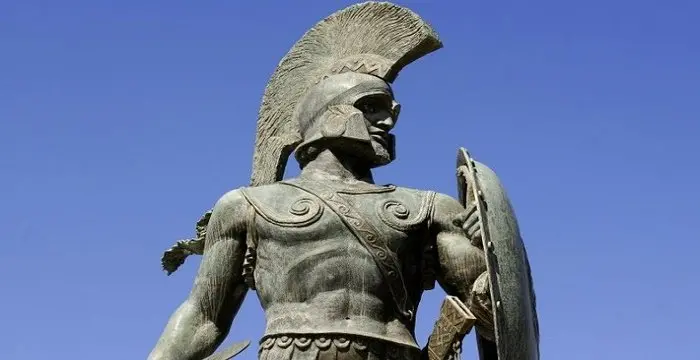
Leonidas I - Greek Men, Timeline and Family
Leonidas I's Personal Details
Leonidas I was a king of the ancient Sparta
| Information | Detail |
|---|---|
| Birthday | 540 BC |
| Nationality | Greek |
| Famous | Historical Personalities, Emperors & Kings, Emperors, Greek Men, King of Ancient Sparta, Kings |
| Spouses | Gorgo, Queen of Sparta |
| Siblings | Cleombrotus, Cleomenes I, Dorieus |
| Childrens | Pleistarchus |
| Birth Place | Sparta, Greece |
| Religion | Ancient Greek religion |
| Gender | Male |
| Father | Anaxandridas II |
| Born in | Sparta, Greece |
| Famous as | King of Ancient Sparta |
| Died at Age | 60 |
Leonidas I's photo
Who is Leonidas I?
Leonidas I of the Agiad dynasty was one of the two kings of the ancient Sparta during the years immediately leading up to the ‘Second Persian War’. The 17th ruler of his line, he was the commander of the 7000 allied Greek forces (modern estimates) against the invading Persian army of 300,000 (modern estimates) at the ‘Battle of Thermopylae’. While the future kings of Sparta were generally exempt from the agoge, the rigorous education and martial training program that all male citizens of the city were subjected to, Leonidas underwent it just the same, not being the initial successor to his father’s throne. He became the co-king of Sparta at around the age of fifty. Nine years into his reign, Greece was attacked by the Persian emperor Xerxes I as a delayed response to the defeat in the ‘First Persian War’ in 490 BC. A military alliance known as the ‘Corinthian League’ was forged under the Spartan leadership among the warring city-states and it was decided that Sparta would lead the defence of the narrow pass of Thermopylae that linked Persia-controlled Thessaly to the central Greece. In the ensuing three-day battle, every soldier of the Greek army except for the 400 Thebans who surrendered to King Xerxes was killed. Leonidas and his martyred warriors have become the symbol of patriotism and sacrifice since then and their battle tactics the matters of discourse in military schools.
// Famous Greek Men
Solon
Solon was an Athenian lawmaker, poet and politician. He is considered as one of the ‘Seven Wise Men’ in Greek culture. This biography provides detailed information about his childhood, life, career, works, achievements and timeline.
Pericles
Pericles was an important Greek statesman, orator, patron of the arts, politician, and general of Athens who lived from 495–429 B.C. Check out this biography to know about his childhood, life, achievements, works & timeline.
Socrates
Socrates was one of the most influential Greek philosophers of the ancient era. Check out this biography to know about his childhood, family life, achievements and fun facts about him.
Childhood & Early Life
If ‘The Histories’ by Herodotus is to be believed, Leonidas, born in 540 BC, was the middle son of King Anaxandridas II of Sparta and his first wife, who was also his niece.
King Anaxandridas II and his first wife did not have any children for many years. Going against the counsel of the ‘ephors’, the council of five annually elected leaders of the Spartan constitution, to take a second wife and set aside the first, Anaxandridas asserted that his wife was blameless. He was eventually placated by being allowed to marry a second time without annulling the previous marriage.
Cleomenes was Anaxandridas’ first born son through his second wife. But a year later, his first wife too bore him a son, Dorieus, and would go on to give birth to two more, Leonidas and Cleombrotus.
Being third in the succession line, Leonidas had to go through the agoge to earn full citizenship (homoios). The Spartans were a militaristic society; they considered giving life for the state as a virtue and the duty of every individual. His training to become a hoplite warrior must have garnered respect of his fellow countrymen.
In 519 BC, Cleomenes was made king. Dorieus, believing himself to be more worthy, could not accept living under Cleomenes’ reign and went to North Africa to establish a colony there. It is unknown whether Leonidas’ supported either of his brothers’ claims or not.
Leonidas married Cleomenes’ daughter Gorgo, following the tradition of avunculate marriages like his parents before him. By the time of the ‘Battle of Sepeia’ against Argos in 494 BC, he had already been named Cleomenes’ heir as the latter didn’t have a male issue.
Accession & Reign
After the violent and mysterious death of his half-brother, Leonidas ascended to the Agiad throne in 490 BC. Sparta historically was ruled by two families, the Agiads and Eurypontids, who believed they had descended from the twins Eurysthenes and Procles, respectively, the great-great-great grandsons of the mythical hero Heracles. During Leonidas’ reign, the Eurypontid king of Sparta was Leotychidas.
His reign did not go unquestioned. Greek biographer and essayist Plutarch wrote about one such incident. When told that he was not better than everyone else save from being the king, Leonidas had promptly replied, “But were I not better than you, I should not be king.” This answer was not a boisterous statement about his birthright but an assertion that, having endured the training of agoge, he was more than qualified to rule Sparta.
Leonidas’ Sparta, alongside Athens, was the largest and most powerful city-state in the classical Greece. While there were a lot of in-fighting among the city-states, they always managed to produce a united front to an invading force.
After Athens had provided support to the Ionian rebels in their fight against the Persian rule, Darius I, the emperor of Persia attacked Athens, but was turned back by a combined Greek force in 490 BC at the ‘Battle of Marathon’. This came to be known as the ‘First Persian War’. In spring 480 BC, Darius’ son, Xerxes launched the second invasion to subjugate entire Greece. Leonidas was chosen to lead the allied Greek resistance.
When the request to join the ‘Corinthian League’ arrived at Sparta, the Oracle at Delphi was consulted. The Oracle prophesied that either Sparta would fall, or the city would lose a king. According to Herodotus, Leonidas deduced that he would not survive the war against the ostensibly impossible odds, so he picked men with living sons to accompany him.
He led 300 of his royal bodyguards, the ‘Hippeis’, towards the narrow pathway of Thermopylae, where on one side, was the Kallídhromon massif, and on the other, the almost vertical cliff by the Gulf of Maliakós. On route, they were joined by 1,000 Arcadians, 700 Thespians, 400 Corinthians, and other groups. Leonidas elected to defend ‘The Middle Gate’, the narrowest part of the pass.
He received and refused the offers made by Persians. Xerxes’ personal message of "Hand over your arms" to him was famously replied to with “Come and take them". Four days later, in August or September of 480 BC, the fighting began.
The ‘Battle of Thermopylae’ transpired simultaneously with the naval ‘Battle of Artemisium’, where the Greek forces were led by the Athenian politician Themistocles.
On the first day of the battle, Leonidas positioned his men with their backs to the Phocian wall. Persian archers proved ineffective against the bronze armours, helmets, and shields of the Greeks. The 10,000 Medes and Cissians units, who were sent after, were virtually butchered by the well-organised Greek forces fighting in tight phalanx formation.
The Greeks were even more successful on the second day and inflicted heavy losses on the Persian infantry. Leonidas marshalled his troops brilliantly, keeping contingents for each city and rotating contingents in and out of battle in regular intervals to avoid fatigue.
At dawn of the third day, Leonidas was informed that a Trachinian named Ephialtes had shown the Persians a mountain path around Thermopylae, and now the Greeks were encircled by 20,000 enemy soldiers.
Most of Leonidas’ army either fled or were sent away by him, except for the contingents from Sparta, Helots, and Thespians who chose to stay. Leonidas rallied them for a courageous last stand, but attacked from both sides, they all perished. However, the Spartans retrieved his body, fending off Persian advances four times.
There is some controversy surrounding the fate of the 400 Thebans in the Spartan army; some sources state that they sacrificed their lives in the battle, while others claim that the Thebans surrendered to King Xerxes without a fight.
Despite the defeat at Thermopylae, the bravery and sacrifice of Leonidas and his men inspired the Greeks to eventually win a decisive victory against Persians at the naval ‘Battle of Salamis’ in September 480 BC. The Greek culture, as a result, would get to flourish uninterrupted.
Major Battle
The Battle of Thermopylae, in which Leonidas I lost his life fighting for Sparta, is considered very significant from a historic point of view. The king and his soldiers are much revered to this day as symbols of patriotism for their valor and courage even in the face of inevitable defeat.
Personal Life & Legacy
Leonidas and Gorgo had a son, Pleistarchus, who ruled Sparta after his father.
In 1955, a monument in honor of Leonidas and his soldiers was erected at Thermopylae by King Paul of Greece. On the other side from the monument, a stone lion marks the small mound where the Spartan dead were buried.
Trivia
Leonidas’ name in Greek means the ‘son of the lion’.
// Famous Emperors
Sundiata Keita
Sundiata Keita was the founder of the Mali Empire in West Africa. This biography profiles his childhood, early life, struggles, founding of empire, rule, administration, achievements and also gives some fun facts.
Ashoka
Ashoka was the third emperor of the Mauryan Dynasty and ruled almost the entire Indian subcontinent. This biography profiles his childhood, life, reign, achievements and timeline
Murad IV
Murad IV was one of the mighty Sultans in the history of the Ottoman Empire. This biography profiles his childhood, family, accession, rule, administration and timeline.
Leonidas I biography timelines
- // 540 BCIf ‘The Histories’ by Herodotus is to be believed, Leonidas, born in 540 BC, was the middle son of King Anaxandridas II of Sparta and his first wife, who was also his niece.
- // 519 BCIn 519 BC, Cleomenes was made king. Dorieus, believing himself to be more worthy, could not accept living under Cleomenes’ reign and went to North Africa to establish a colony there. It is unknown whether Leonidas’ supported either of his brothers’ claims or not.
- // 494 BCLeonidas married Cleomenes’ daughter Gorgo, following the tradition of avunculate marriages like his parents before him. By the time of the ‘Battle of Sepeia’ against Argos in 494 BC, he had already been named Cleomenes’ heir as the latter didn’t have a male issue.
- // 490 BCAfter the violent and mysterious death of his half-brother, Leonidas ascended to the Agiad throne in 490 BC. Sparta historically was ruled by two families, the Agiads and Eurypontids, who believed they had descended from the twins Eurysthenes and Procles, respectively, the great-great-great grandsons of the mythical hero Heracles. During Leonidas’ reign, the Eurypontid king of Sparta was Leotychidas.
- // 490 BC To 480 BCAfter Athens had provided support to the Ionian rebels in their fight against the Persian rule, Darius I, the emperor of Persia attacked Athens, but was turned back by a combined Greek force in 490 BC at the ‘Battle of Marathon’. This came to be known as the ‘First Persian War’. In spring 480 BC, Darius’ son, Xerxes launched the second invasion to subjugate entire Greece. Leonidas was chosen to lead the allied Greek resistance.
- // Sep 480 BCHe received and refused the offers made by Persians. Xerxes’ personal message of "Hand over your arms" to him was famously replied to with “Come and take them". Four days later, in August or September of 480 BC, the fighting began.
- // Sep 480 BCDespite the defeat at Thermopylae, the bravery and sacrifice of Leonidas and his men inspired the Greeks to eventually win a decisive victory against Persians at the naval ‘Battle of Salamis’ in September 480 BC. The Greek culture, as a result, would get to flourish uninterrupted.
- // 1955In 1955, a monument in honor of Leonidas and his soldiers was erected at Thermopylae by King Paul of Greece. On the other side from the monument, a stone lion marks the small mound where the Spartan dead were buried.
// Famous Kings
Sundiata Keita
Sundiata Keita was the founder of the Mali Empire in West Africa. This biography profiles his childhood, early life, struggles, founding of empire, rule, administration, achievements and also gives some fun facts.
Ashoka
Ashoka was the third emperor of the Mauryan Dynasty and ruled almost the entire Indian subcontinent. This biography profiles his childhood, life, reign, achievements and timeline
Murad IV
Murad IV was one of the mighty Sultans in the history of the Ottoman Empire. This biography profiles his childhood, family, accession, rule, administration and timeline.
Xerxes I
Xerxes I (Xerxes the Great) was the fourth and the most famous king of the Archaemenid dynasty of Persia. This biography profiles his childhood, family, personal life, life history, achievements, campaigns, administration, death and other facts.
Sargon of Akkad
Sargon of Akkad, also called ‘Sargon the Great’, ‘Sarru-Kan’ and ‘Shar-Gani-Sharri’, was the founder and first king of the Akkadian Empire. This biography profiles his childhood, life, rule, administration, timeline, and gives some fun facts.
Abdullah of Saudi Arabia
Abdullah bin Abdulaziz Al Saud was the King of Saudi Arabia from 2005 to 2015 and the third wealthiest head of state in the world. Find more facts about his life, childhood and timeline.
Leonidas I's FAQ
When was Leonidas I died?
Leonidas I was died at 2020-04-14
Where was Leonidas I died?
Leonidas I was died in Thermopylae
Which age was Leonidas I died?
Leonidas I was died at age 60
Where is Leonidas I's birth place?
Leonidas I was born in Sparta, Greece
What is Leonidas I nationalities?
Leonidas I's nationalities is Greek
Who is Leonidas I spouses?
Leonidas I's spouses is Gorgo, Queen of Sparta
Who is Leonidas I siblings?
Leonidas I's siblings is Cleombrotus, Cleomenes I, Dorieus
Who is Leonidas I childrens?
Leonidas I's childrens is Pleistarchus
What is Leonidas I's religion?
Leonidas I's religion is Ancient Greek religion
Who is Leonidas I's father?
Leonidas I's father is Anaxandridas II
How famous is Leonidas I?
Leonidas I is famouse as King of Ancient Sparta
